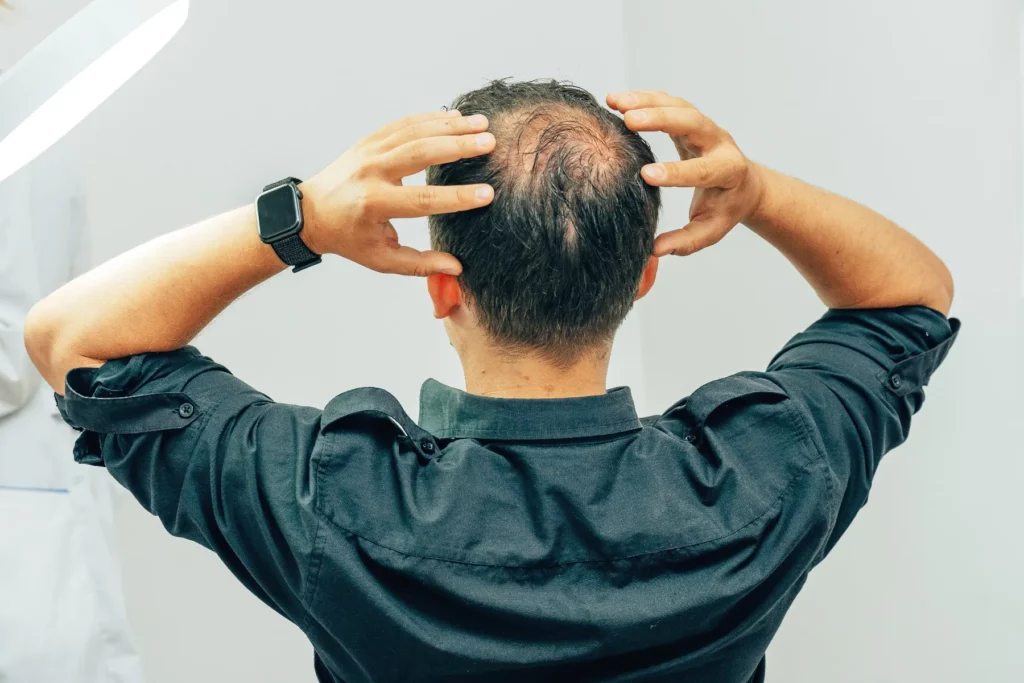Is Finasteride an Effective Hair Loss Treatment?
This question has garnered significant attention among individuals seeking solutions for hair loss. Finasteride’s origins trace back to the 1980s when researchers initially developed it as a potential treatment for benign prostatic hyperplasia. During clinical trials, physicians observed an unexpected side effect – participants experienced notable hair regrowth while taking the medication.
This serendipitous discovery led to further research, culminating in FDA approval for treating male pattern baldness. Marketed as Propecia, the drug gained widespread recognition as an effective hair loss solution. Following the expiration of Propecia’s patent, generic versions became available, making Finasteride more accessible to those combating hair loss.
Currently prescribed to both men and women, Finasteride belongs to the 5-alpha-reductase inhibitor class. It works by preventing testosterone’s conversion to dihydrotestosterone (DHT), a hormone implicated in genetic hair loss. By reducing DHT levels, Finasteride helps slow hair loss progression and may stimulate regrowth in affected individuals.
Treatment outcomes vary significantly among individuals. While many report substantial hair regrowth, others observe minimal improvement. Factors influencing results include hair loss severity, individual response to medication, and treatment adherence.
Consultation with a healthcare provider is essential before starting Finasteride. A medical professional can assess your specific condition, evaluate your hair loss pattern, and determine if this treatment is appropriate. They can also provide dosage recommendations, discuss potential side effects, and offer guidance for safe use.
Potential side effects include sexual dysfunction such as reduced libido, erectile difficulties, or decreased ejaculate volume. While these effects are uncommon and typically reversible upon discontinuation, patients should discuss any concerns with their physician.
In summary, Finasteride demonstrates efficacy for treating male pattern baldness. Its discovery during prostate treatment trials revealed its hair growth properties. Though results vary, it remains a commonly prescribed option. Professional medical consultation is crucial to determine if Finasteride is appropriate for your specific situation.

Finasteride’s Mechanism of Action
Finasteride operates by inhibiting testosterone’s conversion to dihydrotestosterone (DHT), a key factor in male pattern baldness. DHT causes hair follicles to miniaturize, leading to thinning and eventual hair loss. By blocking this conversion, Finasteride interrupts this damaging cycle.
This inhibition allows affected follicles to recover and potentially regrow hair. Additionally, by preventing DHT formation, Finasteride serves as a preventive measure against further hair loss. This dual action makes it valuable for treating male pattern baldness.
Genetic factors significantly influence DHT production and hair loss susceptibility. Some individuals maintain full hair throughout life, while others experience early-onset baldness. Understanding these genetic influences helps predict treatment outcomes.
Proper Finasteride Administration
Finasteride tablets should be taken whole once daily with water. Crushing tablets risks skin absorption, which is particularly dangerous for pregnant women. Strict adherence to administration guidelines ensures safety.
Timing isn’t critical – the medication works equally well with or without food. However, maintaining a consistent daily schedule promotes treatment adherence and optimizes results.
Purchasing Finasteride
Finasteride is available as a generic alternative to Propecia through MedsBird. Generic versions offer equivalent effectiveness at reduced cost, providing affordable access to this hair loss treatment.
Finasteride’s DHT-blocking action helps prevent follicle miniaturization and promotes regrowth. Genetic factors influence treatment response. Proper administration involves taking whole tablets with water at consistent times. MedsBird provides convenient access to affordable generic Finasteride.

Treatment Timeline
Visible results typically appear after three months of consistent use. Initial shedding may occur as the medication makes way for new growth. Continuous treatment for at least one year is necessary to properly evaluate effectiveness. Lack of improvement after twelve months warrants medical consultation.
Long-Term Use
Research from the Prostate Cancer Prevention Trial indicates Finasteride is safe for extended use. Five-year studies show sustained hair growth and slowed progression of baldness with daily 1mg doses. While generally safe for long-term treatment, individual consultation with a healthcare provider is recommended.
Treatment Effectiveness
Scientific evidence strongly supports Finasteride’s efficacy for male pattern hair loss. However, results vary individually. The treatment may be less effective for completely bald individuals or those with conditions like alopecia. Professional medical advice helps determine the most suitable treatment approach.
References:







